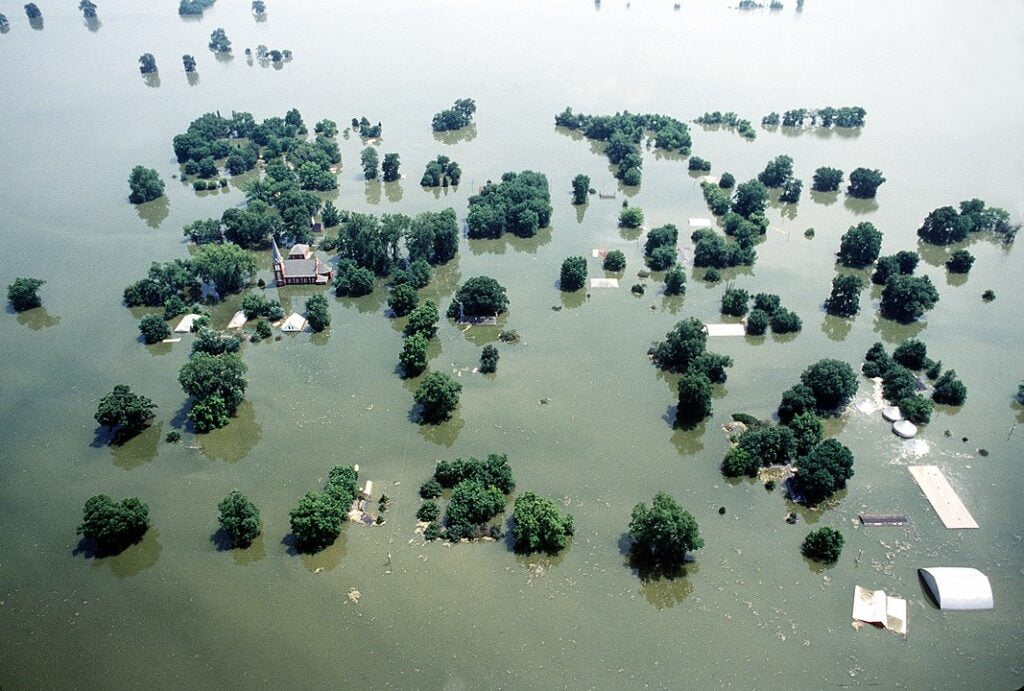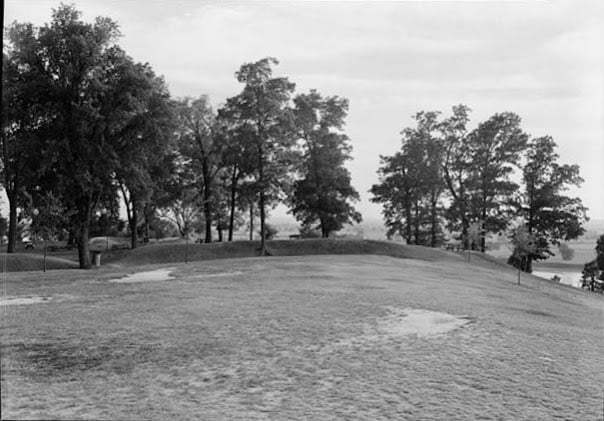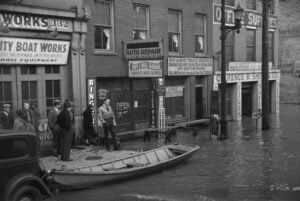What happened to Illinois’ first capital, Kaskaskia?

The 1993 flooding of Kaskaskia. This village was moved from its original location after it was inundated by the Mississippi River in the 19th century.
Once the burgeoning capital of Illinois, Kaskaskia now endures as a shadow of its past glory, continually fighting against nature’s whims and the Mississippi River’s altering course. The history of Kaskaskia is indeed tragic.
Tucked within a 23-square-mile stretch of Mississippi River floodplain, Kaskaskia is a geographical peculiarity—an island distanced from Illinois proper, accessible only through Missouri.
Kaskaskia’s French origin
This settlement, founded as a Jesuit mission in 1703, evolved into a French trading post and farming community. In 1725, the French incorporated Kaskaskia as a town, a status bolstered by special rights bestowed by King Louis XV of France. After the British seized control in 1766, villagers destroyed the French-built Fort Kaskaskia, only to have it reclaimed by the United States in 1778 under George Rogers Clark.
Kaskaskia claimed the title of Illinois Territory capital in 1809, a position it briefly retained even after Illinois transitioned to statehood in 1818. However, the center of governance shifted to the more centrally located Vandalia in 1819, leaving Kaskaskia grappling for a new identity.

Kaskaskia’s flooding
As the 19th century progressed, the town was subjected to repeated flood-induced devastation. Despite the economic boost brought by steamboats on the Mississippi River, their usage paradoxically contributed to Kaskaskia’s downfall. The systematic deforestation conducted by steamboat crews destabilized river banks, triggering soil erosion, and instigating a series of floods.
The onslaught of 1844 marked Kaskaskia’s first significant inundation, which forced residents to desert their original location, now immersed beneath the Mississippi. Another catastrophic flood in 1881 shifted the river’s course eastward, isolating Kaskaskia from Illinois—its isolation made total by the absence of any connecting bridges.
However, the resilient townsfolk countered adversities. They reconstructed the Church of the Immaculate Conception in 1893 and safeguarded the “Liberty Bell of the West” therein. Yet, despite these efforts, the repeated floods steadily reduced the population. By the early 20th century, the original settlement vanished entirely, and Kaskaskia reincarnated further south, only to endure further flood devastation in 1973 and 1993. In 1990, a flood left the remaining 32 residents with houses submerged under nine feet of water.
Kaskaskia today
As the new millennium dawned, Kaskaskia’s population diminished to a mere nine residents. The village teetered on the brink of oblivion but managed to endure.
Today, Kaskaskia’s once-vibrant tableau has morphed into 12 blocks primarily filled with vacant lots—a haunting embodiment of its rich history, scarred by constant battles against nature.
As Illinois’ least populous incorporated community, Kaskaskia’s future hangs in balance. The Mississippi River’s next maneuver could seal the town’s fate. For now, it remains, both a tribute to the resilience of its people and a solemn reminder of nature’s destructive power.
Like its southern counterpart Cairo, Kaskaskia symbolizes the capricious nature of geographical fortune. Both cities, once thriving on the Mississippi’s banks, were humbled by the very river that brought prosperity. However, they carry a poignant allure, echoing lessons of nature’s omnipotence. The history of Kaskaskia is almost all that remains of Illinois’ first capital.
Articles related to the Mississippi River:




1 thought on “What happened to Illinois’ first capital, Kaskaskia?”